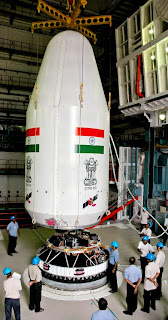The Indian Space Research Organisation (ISRO) is planning to launch 10 satellites in a year to better communication network and improve disaster management, the government revealed Wednesday.
"ISRO is planning to launch 10 satellites in a year. The actual number of satellites to be launched will be decided based on national developmental priorities," Science and Technology Minister Prithviraj Chavan said in the Lok Sabha.
"The aims and objectives of these satellites include natural resources management, augmenting the communications infrastructure, satellite navigation, disaster management support, space science research and planetary exploration," the minister added.
He said the action plan of the department in this context will include augmenting the technical infrastructure within ISRO and enhancing the production capabilities in the Indian industry in the 12th Five-Year Plan period (2012-17) to meet projected demand.


